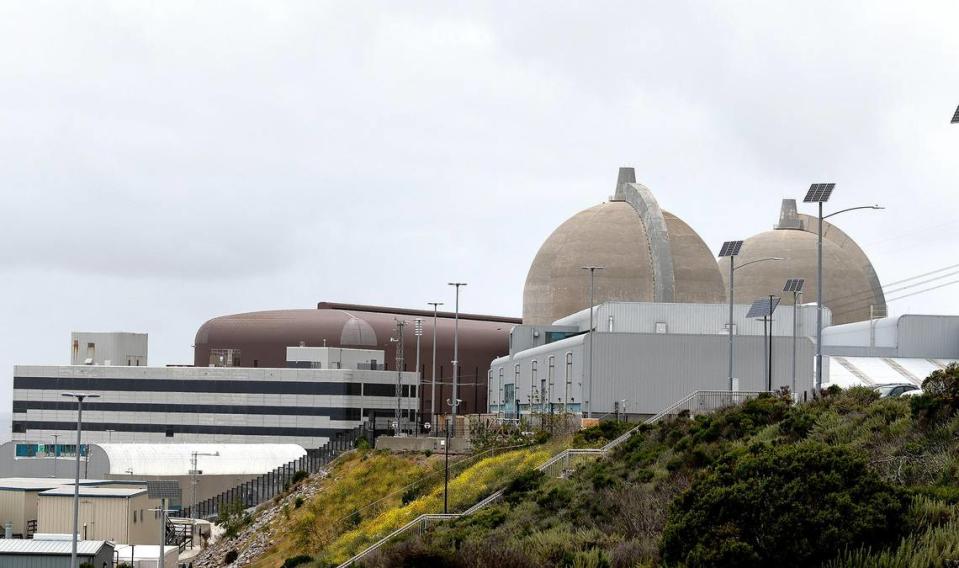California PUC should delay decision on Diablo Canyon until all the facts are in | Opinion

The California Public Utilities Commission (CPUC) is poised to decide at its business meeting on Thursday, Dec. 14, whether or not to extend the operation of the Diablo Canyon Nuclear Power Plant for another five years. Unfortunately, the commissioners are not ready.
Simply put, the CPUC hasn’t gathered enough information to make such a decision about the future operations of Diablo. There are several big, unanswered questions the CPUC needs to dig into further to understand whether the facility can be operated cost-effectively until the end of the decade.
The primary concern with extending the operation of Diablo is the uncertainty about how much it will cost to make the plant safe and ready for continued operation. PG&E, the owner and operator of Diablo, has just submitted an application for the renewal of its nuclear license from the Nuclear Regulatory Commission (NRC).
This means that the costs of complying with possible NRC license requirements are completely unknown. In addition, PG&E did not provide the CPUC with a complete list of likely repairs that may be needed during the license extension period. These missing costs, including those for seismic safety and replacement of aging equipment, could add up to billions. And once it approves extended operation, it will become increasingly difficult for the CPUC to prevent PG&E from throwing good money after bad.
Opinion
One of the main arguments for extending Diablo’s operation is the claim that the plant is necessary to maintain system reliability at times when the grid is most stressed, in late summer evenings. Power resources need to be available on command to ramp up power quickly as the sun goes down. However, the reliance on Diablo to meet this evening need may actually create more grid reliability risks. For instance, if Diablo were to experience an unexpected outage during the summer, it would jeopardize reliability if other resources were not available to back it up. Because Diablo is such a large single unit, it takes far more resources to back up than other power plants.
We’ve seen this before. In 2013, the San Onofre Nuclear Generating Station was permanently shut down by the CPUC following a series of safety and reliability issues. Similarly, in 1989, the Rancho Seco Nuclear Generating Station was closed following a major accident and a difficult attempt at recovery.
Another major concern with extending Diablo’s operation is its age, with Diablo being one of the nation’s oldest nuclear power plants. Its age raises questions about reactor vessel embrittlement from neutron bombardment. Over time, as neutrons from nuclear reactions collide with the atoms in steel, they displace atoms and create defects that make the metal more brittle and more likely to crack or break under stress. The embrittlement of steel in a reactor pressure vessel is a serious issue as it can lead to a sudden and catastrophic failure of the reactor that can release radioactive material into the environment. Before extending the reactor’s operation, PG&E must conduct a thorough investigation of potential embrittlement of Diablo.
Gov. Gavin Newsom, the CPUC and many others in California clearly understand that there is an abundance of viable clean energy projects that could be bundled as an alternative to Diablo. The only question is when they could be operational and provide grid reliability services. There is no doubt that available solar and wind energy, using electricity more efficiently and timely and battery storage systems could quickly add up to a portfolio more robust, reliable and resilient than Diablo’s power capacity.
The CPUC has already ordered load-serving entities to bring online at least 2,500 megawatts of new resources with specified reliability attributes by June 2025 to replace the 2,200 megawatts provided by Diablo. The CPUC requires reports from these entities on their progress bringing new resources online. Unfortunately, CPUC staff has not documented the progress in meeting this order.
Practical and available clean energy and customer-side alternatives can be available at least as quickly and more surely to provide electric system reliability. The CPUC’s decision to extend the operation of Diablo should be postponed past this month until all relevant cost information about the plant’s possible future operation is available.
Ed Smeloff is an independent consultant working on energy policy issues in California. A former member of the Sacramento Municipal Utility District Board of Directors, he helped enact a law that permits cities and counties to form local energy procurement entities. Amory B. Lovins is adjunct professor of civil and environmental engineering at Stanford. He has advised governments and industry on electricity strategy worldwide.

 Yahoo Finance
Yahoo Finance 